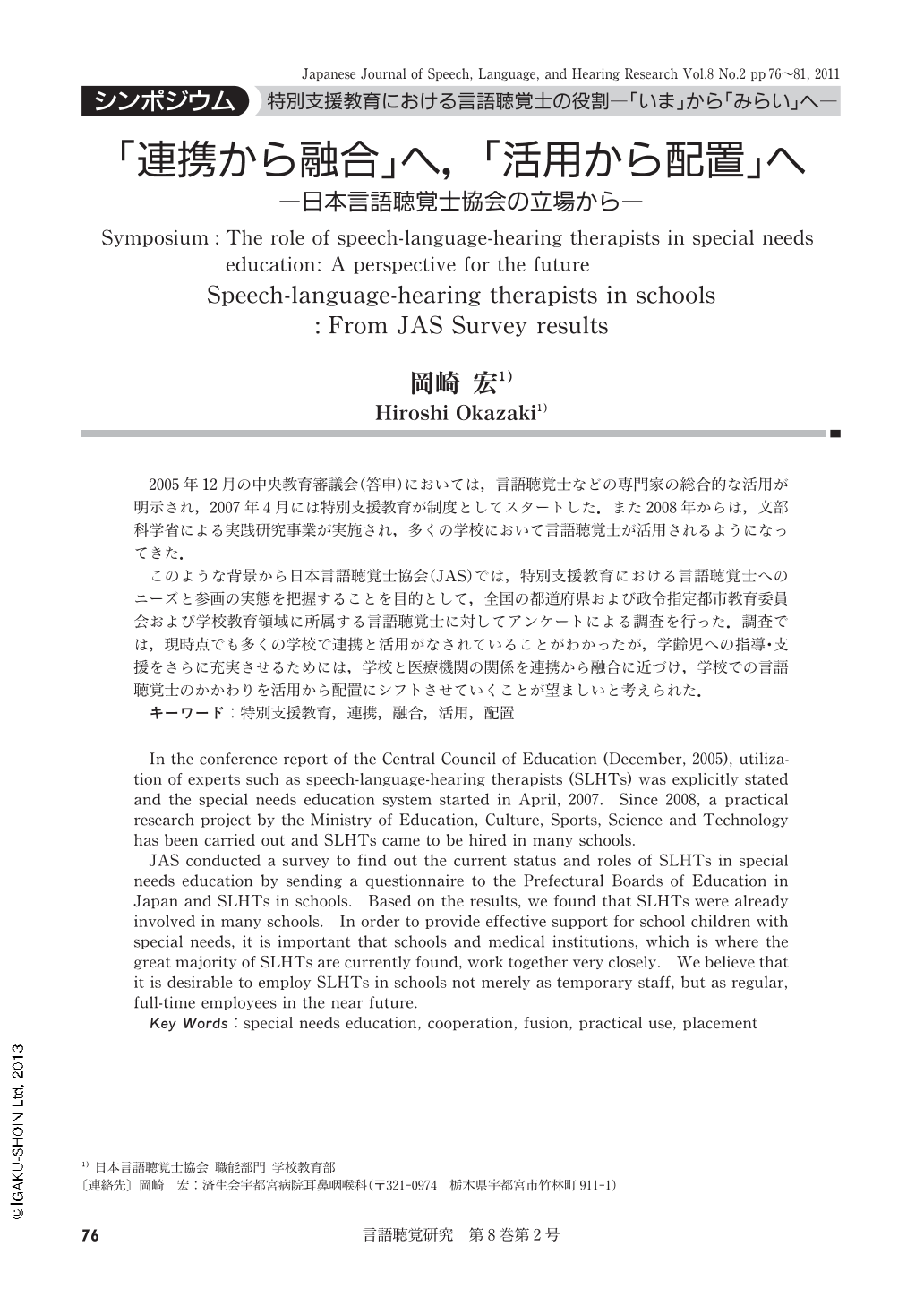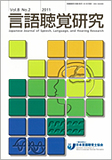Japanese
English
- 有料閲覧
- Abstract 文献概要
- 1ページ目 Look Inside
- 参考文献 Reference
- サイト内被引用 Cited by
2005年12月の中央教育審議会(答申)においては,言語聴覚士などの専門家の総合的な活用が明示され,2007年4月には特別支援教育が制度としてスタートした.また2008年からは,文部科学省による実践研究事業が実施され,多くの学校において言語聴覚士が活用されるようになってきた.
このような背景から日本言語聴覚士協会(JAS)では,特別支援教育における言語聴覚士へのニーズと参画の実態を把握することを目的として,全国の都道府県および政令指定都市教育委員会および学校教育領域に所属する言語聴覚士に対してアンケートによる調査を行った.調査では,現時点でも多くの学校で連携と活用がなされていることがわかったが,学齢児への指導・支援をさらに充実させるためには,学校と医療機関の関係を連携から融合に近づけ,学校での言語聴覚士のかかわりを活用から配置にシフトさせていくことが望ましいと考えられた.
In the conference report of the Central Council of Education (December, 2005), utilization of experts such as speech-language-hearing therapists (SLHTs) was explicitly stated and the special needs education system started in April, 2007. Since 2008, a practical research project by the Ministry of Education, Culture, Sports, Science and Technology has been carried out and SLHTs came to be hired in many schools.
JAS conducted a survey to find out the current status and roles of SLHTs in special needs education by sending a questionnaire to the Prefectural Boards of Education in Japan and SLHTs in schools. Based on the results, we found that SLHTs were already involved in many schools. In order to provide effective support for school children with special needs, it is important that schools and medical institutions, which is where the great majority of SLHTs are currently found, work together very closely. We believe that it is desirable to employ SLHTs in schools not merely as temporary staff, but as regular, full-time employees in the near future.

Copyright © 2011, Japanese Association of Speech-Language-Hearing Therapists. All rights reserved.


